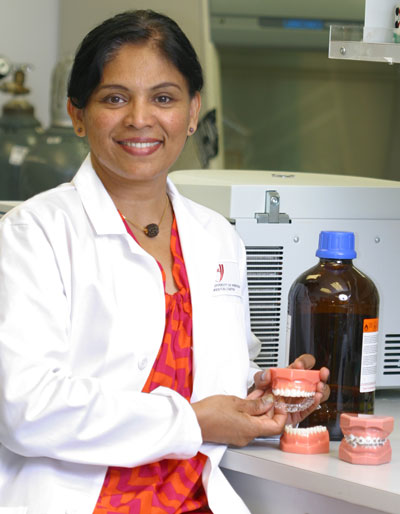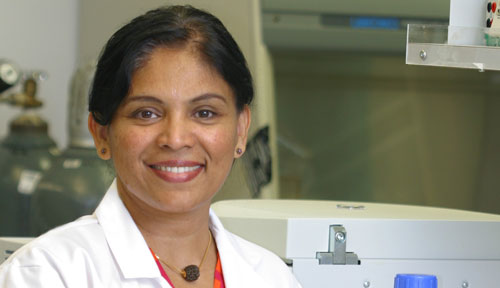 |
Sheela Premaraj, D.D.S. |
That’s what Sheela Premaraj, D.D.S., assistant professor in the department of growth and development at the UNMC College of Dentistry in Lincoln, wants to know.
Last fall, Dr. Premaraj launched a pilot project funded by a $25,000 grant from Align Technology, the company that makes Invisalign®, to investigate the difference between the two.
But it’s more than idle curiosity that has Dr. Premaraj comparing one type of braces to another.
Her goal is to find answers that will give dental professionals better treatment options for patients who have a tendency for plaque formation.
“Gum disease, enamel decalcifications are all problems our patients encounter when wearing braces because of the plaque that builds up so easily on the brackets and wires,” Dr. Premaraj said.
Even with daily routine care, brushing and flossing, and regular dental check-ups, many people still build up a lot of plaque that can lead to gingivitis and periodontal disease, she said.
Enamel decalcifications, or white spots, can occur on teeth under traditional braces, Dr. Premaraj said. These aren’t clearly visible until the brackets are removed.
Dentists do have some control over how the bacterial plaque buildup is treated, she said.
“There is an ocean of bacteria in the human mouth that clings to the tooth surface and produces harmful effects to the teeth and its environment. If we can identify what is present before braces are introduced and what occurs after the patient has worn braces over time, then perhaps we can determine the best way to combat it.”
Patients in her study are seen before braces are applied and again at six months to see what effects the introduction of braces have on the mouth’s bacterial environment. This baseline study, she hopes, will provide enough data to apply for a larger grant to conduct a wider ranging study with more patients.
With Invisalign®, Dr. Premaraj has theorized that there should be less buildup of plaque and bacteria because the plastic trays can be removed and cleaned daily, where the metal brackets and wires cannot. The potential drawback: Invisalign® may prevent the saliva’s natural cleansing action since it wraps completely around the teeth and part of the gums.
“Is it the better orthodontic option? Maybe, maybe not,” she said. “This study should answer that question.”
